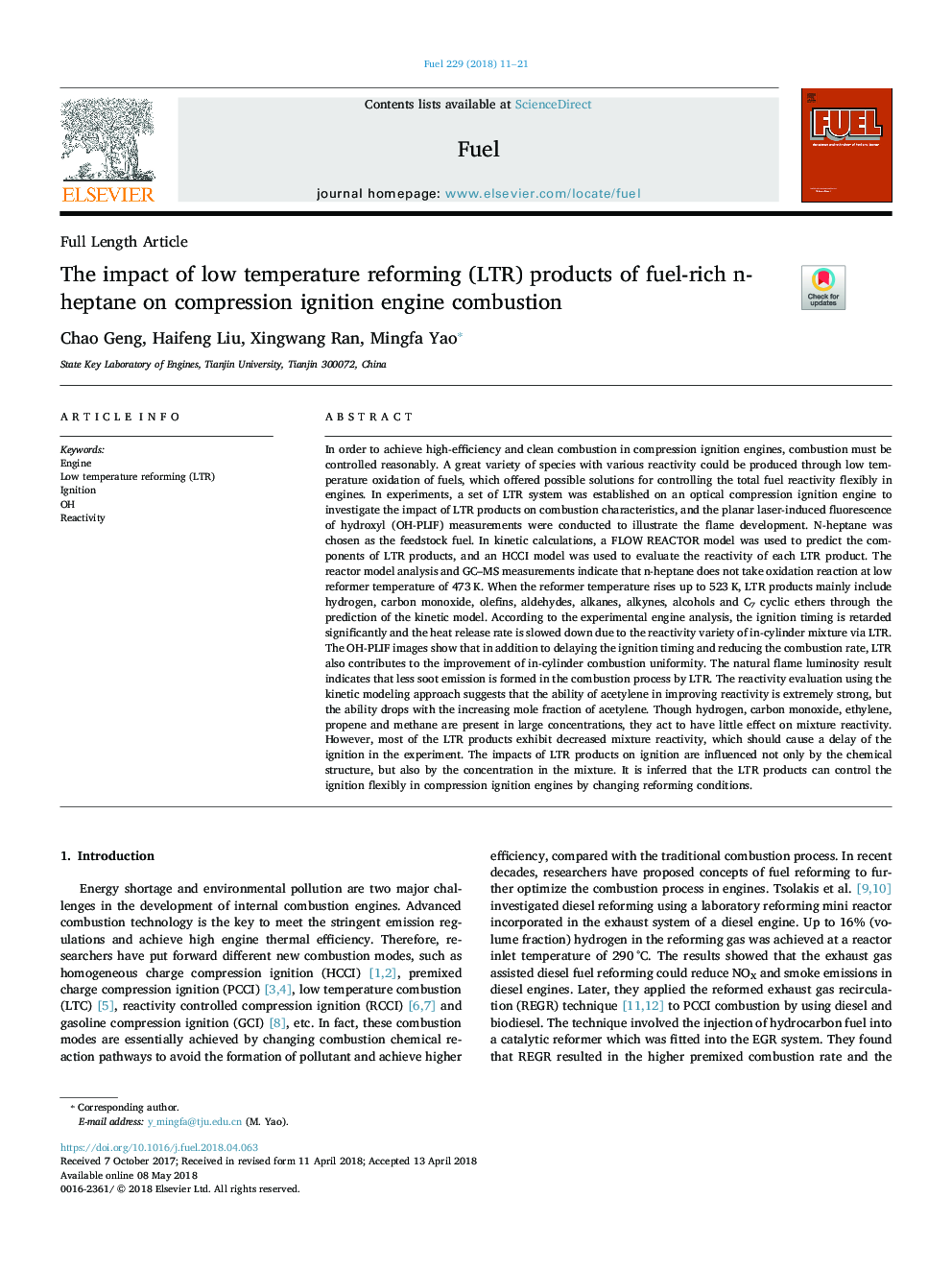| کد مقاله | کد نشریه | سال انتشار | مقاله انگلیسی | نسخه تمام متن |
|---|---|---|---|---|
| 6630666 | 1424935 | 2018 | 11 صفحه PDF | دانلود رایگان |
عنوان انگلیسی مقاله ISI
The impact of low temperature reforming (LTR) products of fuel-rich n-heptane on compression ignition engine combustion
دانلود مقاله + سفارش ترجمه
دانلود مقاله ISI انگلیسی
رایگان برای ایرانیان
موضوعات مرتبط
مهندسی و علوم پایه
مهندسی شیمی
مهندسی شیمی (عمومی)
پیش نمایش صفحه اول مقاله

چکیده انگلیسی
In order to achieve high-efficiency and clean combustion in compression ignition engines, combustion must be controlled reasonably. A great variety of species with various reactivity could be produced through low temperature oxidation of fuels, which offered possible solutions for controlling the total fuel reactivity flexibly in engines. In experiments, a set of LTR system was established on an optical compression ignition engine to investigate the impact of LTR products on combustion characteristics, and the planar laser-induced fluorescence of hydroxyl (OH-PLIF) measurements were conducted to illustrate the flame development. N-heptane was chosen as the feedstock fuel. In kinetic calculations, a FLOW REACTOR model was used to predict the components of LTR products, and an HCCI model was used to evaluate the reactivity of each LTR product. The reactor model analysis and GC-MS measurements indicate that n-heptane does not take oxidation reaction at low reformer temperature of 473â¯K. When the reformer temperature rises up to 523â¯K, LTR products mainly include hydrogen, carbon monoxide, olefins, aldehydes, alkanes, alkynes, alcohols and C7 cyclic ethers through the prediction of the kinetic model. According to the experimental engine analysis, the ignition timing is retarded significantly and the heat release rate is slowed down due to the reactivity variety of in-cylinder mixture via LTR. The OH-PLIF images show that in addition to delaying the ignition timing and reducing the combustion rate, LTR also contributes to the improvement of in-cylinder combustion uniformity. The natural flame luminosity result indicates that less soot emission is formed in the combustion process by LTR. The reactivity evaluation using the kinetic modeling approach suggests that the ability of acetylene in improving reactivity is extremely strong, but the ability drops with the increasing mole fraction of acetylene. Though hydrogen, carbon monoxide, ethylene, propene and methane are present in large concentrations, they act to have little effect on mixture reactivity. However, most of the LTR products exhibit decreased mixture reactivity, which should cause a delay of the ignition in the experiment. The impacts of LTR products on ignition are influenced not only by the chemical structure, but also by the concentration in the mixture. It is inferred that the LTR products can control the ignition flexibly in compression ignition engines by changing reforming conditions.
ناشر
Database: Elsevier - ScienceDirect (ساینس دایرکت)
Journal: Fuel - Volume 229, 1 October 2018, Pages 11-21
Journal: Fuel - Volume 229, 1 October 2018, Pages 11-21
نویسندگان
Chao Geng, Haifeng Liu, Xingwang Ran, Mingfa Yao,